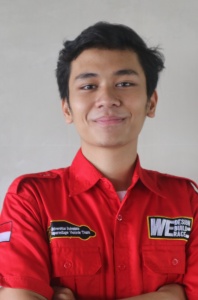User:Yusuf Timothy Turnip
Introduction
Hello All!
My name is Yusuf Timothy Turnip people usually call me Timothy with NPM 2106728194.
I am an undergraduate student from mechanical engineering FTUI 2nd year from Kelas Metode Numerik 01
Pressurized Hydrogen Storage Optimization
Tugas Pekan 1
Task: Optimasi tangki hidrogen dengan kapasitas 1 liter, pressure 8 bar, dan biaya produksi maksimal Rp. 500.000
Dalam mengoptimasi sistem penyimpanan hidrogen, ada beberapa faktor yang harus dipertimbangkan selama mendesain:
1. Choose efficient and cost-effective tank material: Select a material that is strong and lightweight to reduce production costs. Materials such as carbon fiber or aluminum alloys can be good choices because they are lightweight and have sufficient strength to withstand hydrogen pressure.
2. Design an efficient tank geometry: Optimize the shape and size of the tank to minimize the use of materials and production costs. A cylindrical design with tapered ends can help reduce the amount of material required.
3. Select a secure locking system: Ensure that the tank has a safe and efficient locking system to prevent hydrogen leaks. A good locking system will ensure that the tank remains airtight and maintains the desired pressure.
4. Use high-pressure filling technology: To fill the tank with high pressure, make sure to use efficient and cost-effective high-pressure filling technology. A good filling technology will enable quick and accurate tank filling.
5. Consider safety factors: Ensure that the tank has adequate safety features, such as pressure valves or pressure relief valves, to prevent excessive pressure buildup and protect users from hazards.
6. Optimize the production process: In addition to optimizing the tank design, you also need to consider an efficient production process and related costs. Identify production steps that allow cost reduction, such as production automation or the use of efficient manufacturing techniques.
7. Calculate production costs: After implementing the above steps, perform a cost calculation to ensure that the production costs remain below the maximum budget of Rp. 500,000. Evaluate cost components, including raw materials, labor, and production equipment, to ensure they align with the predetermined budget.
These are general guidelines to optimize a hydrogen tank with a capacity of 1 liter, pressure of 8 bar, and a maximum production cost of Rp. 500,000. Keep in mind that additional technical expertise and assistance may be required for a more detailed and accurate optimization process.
